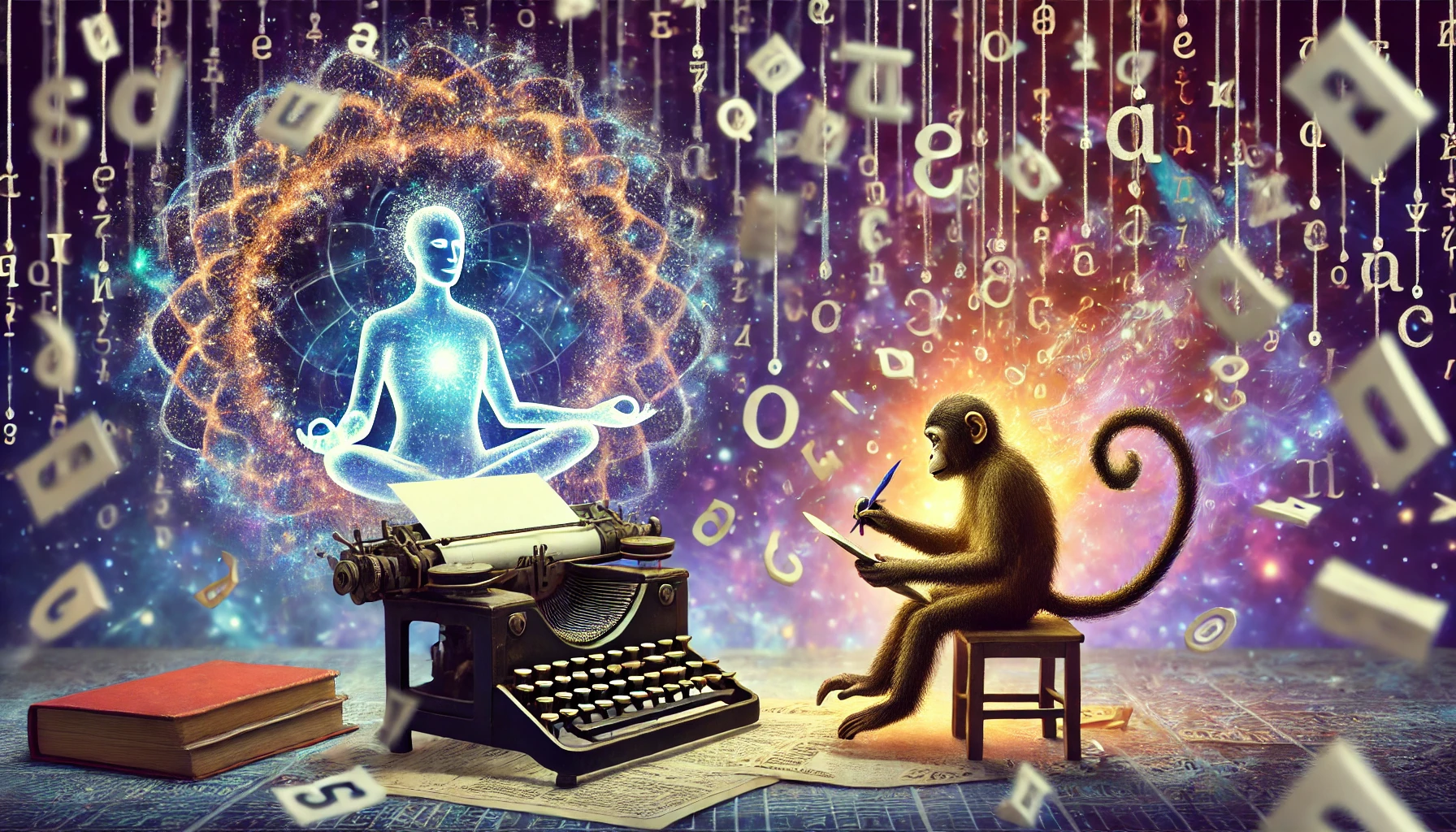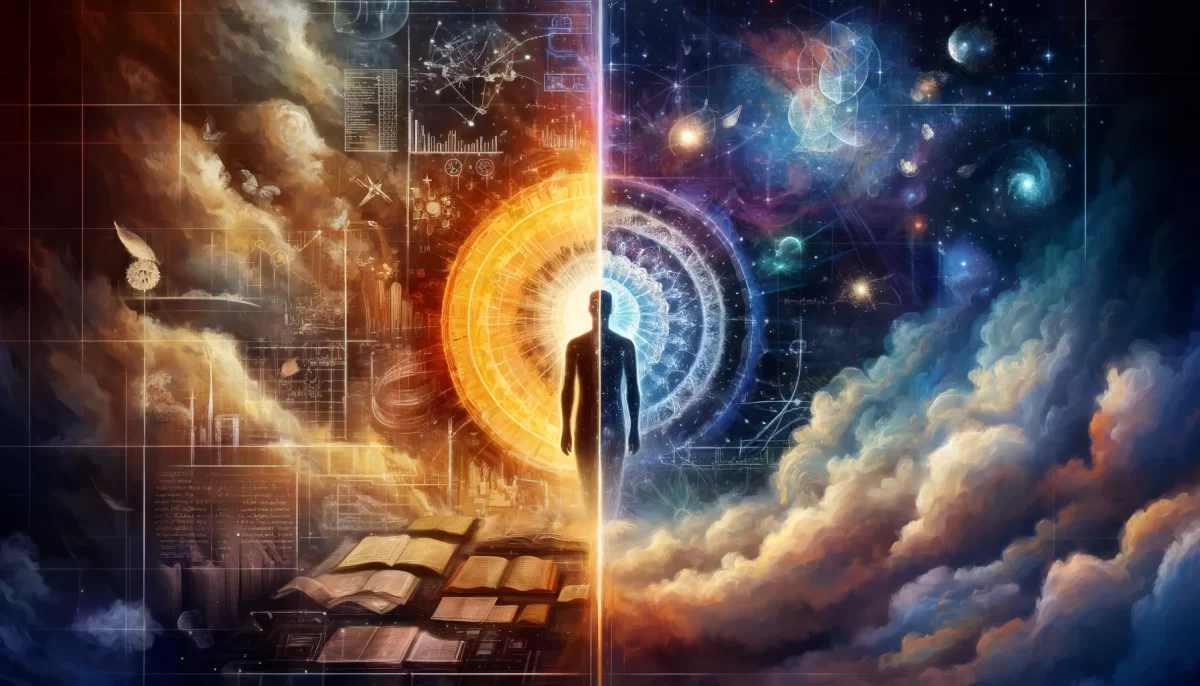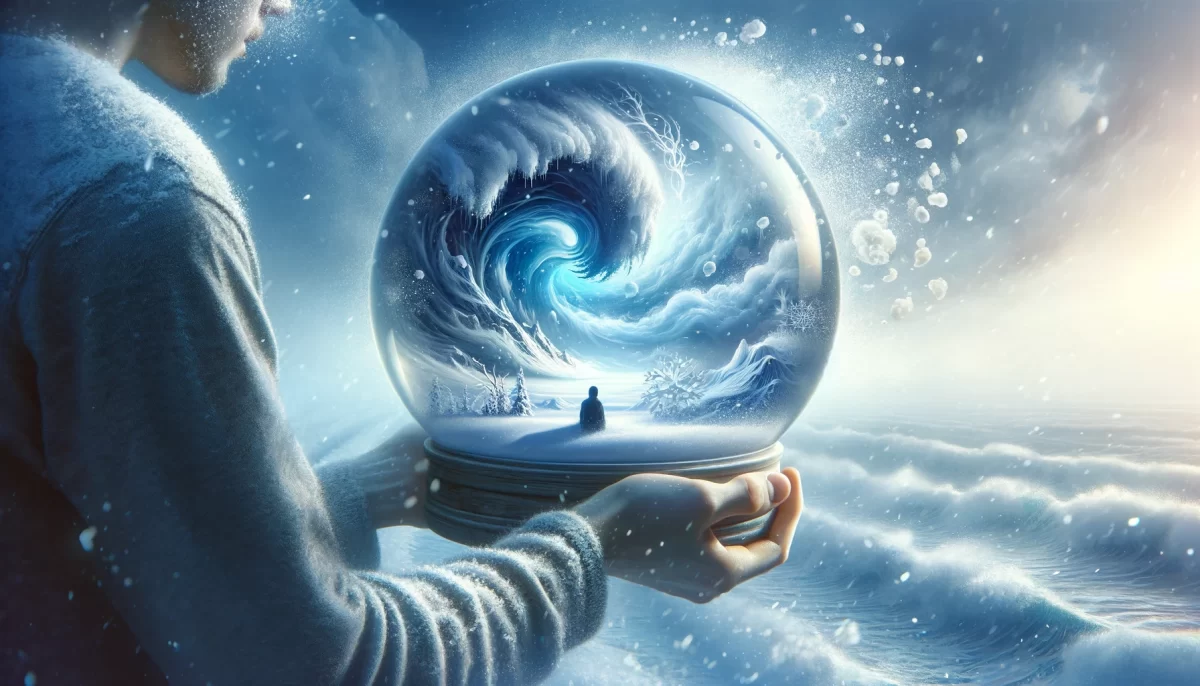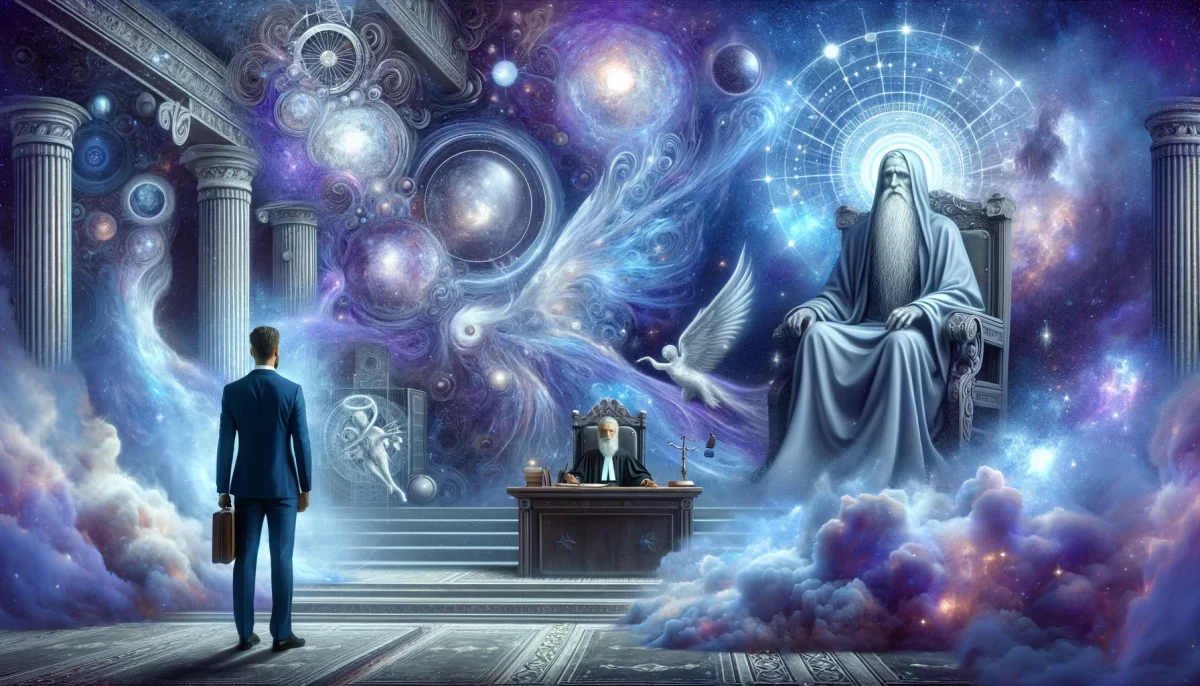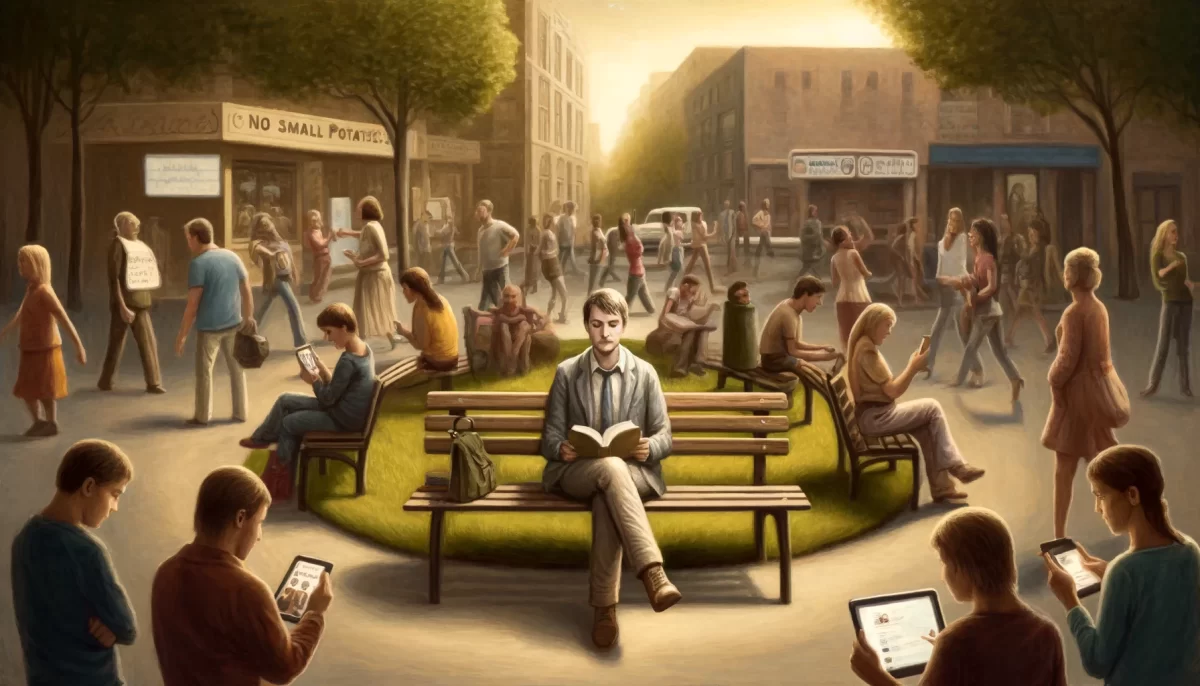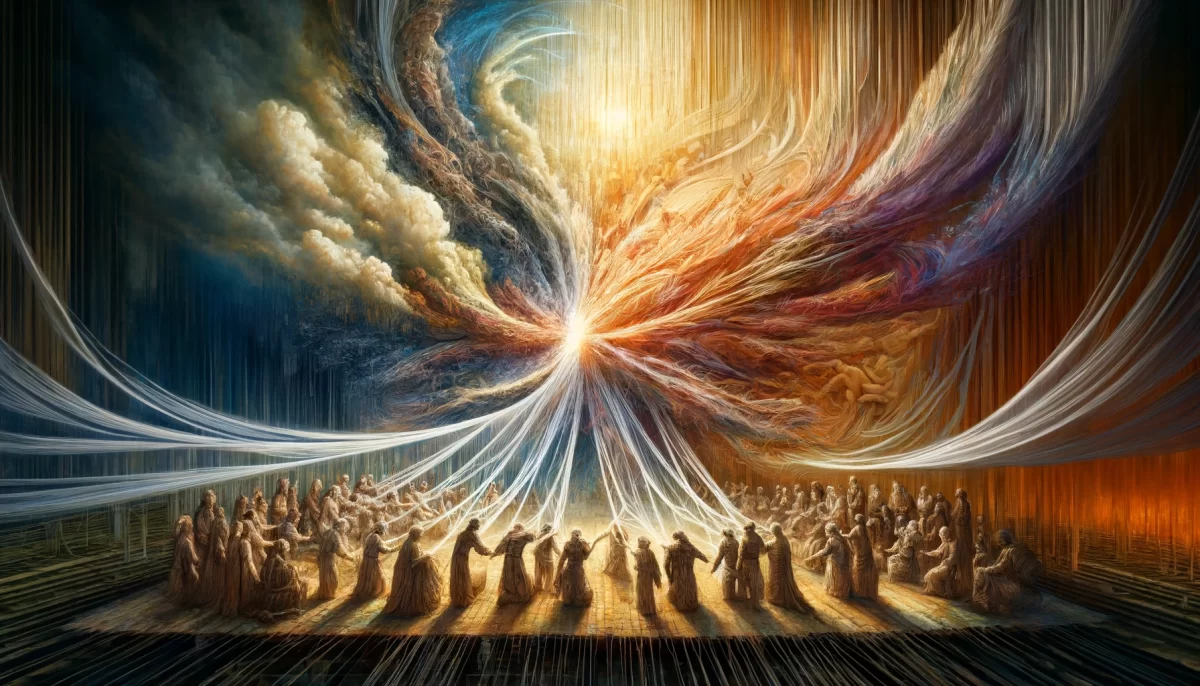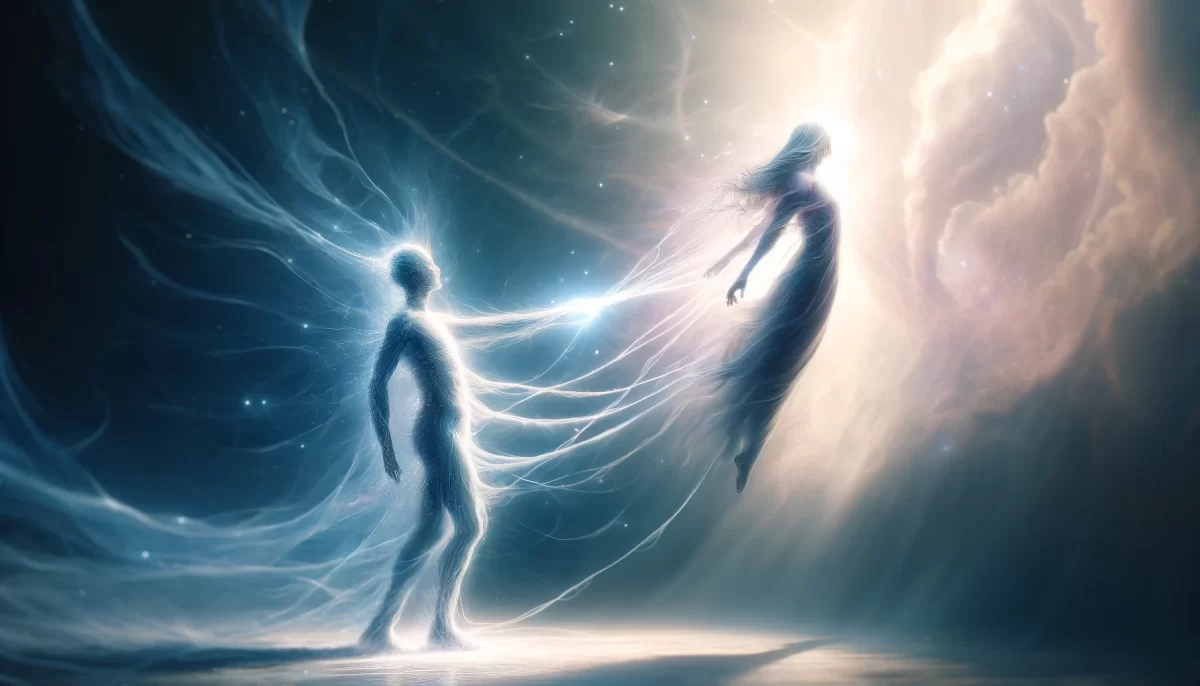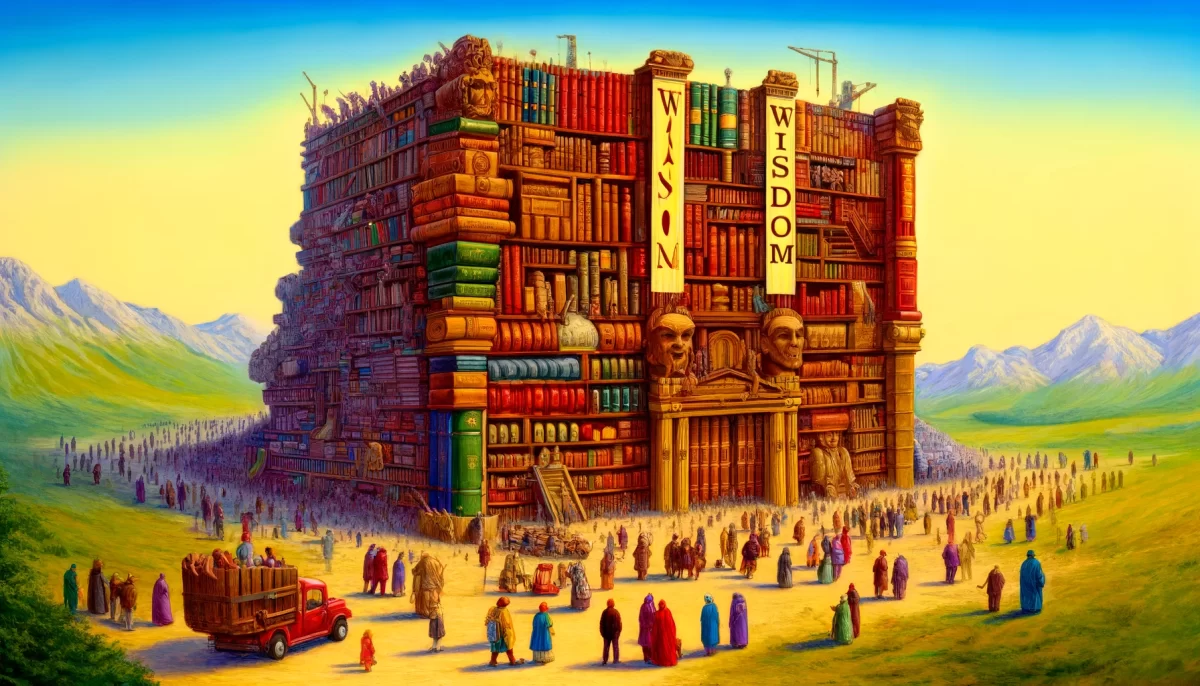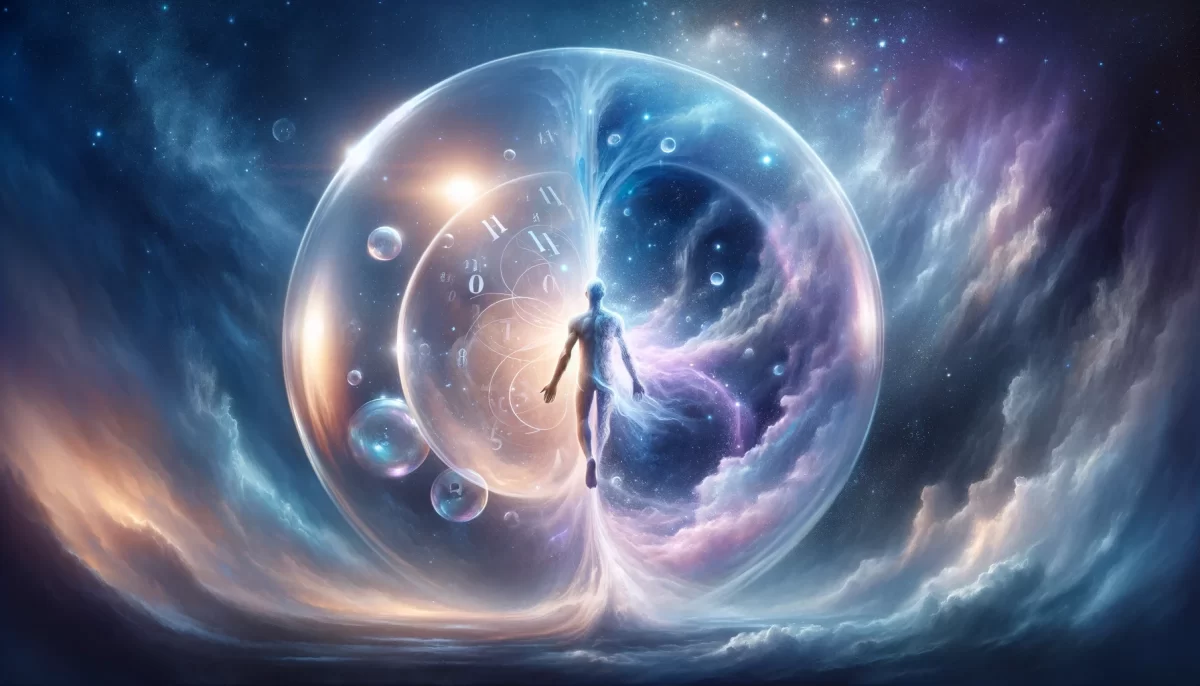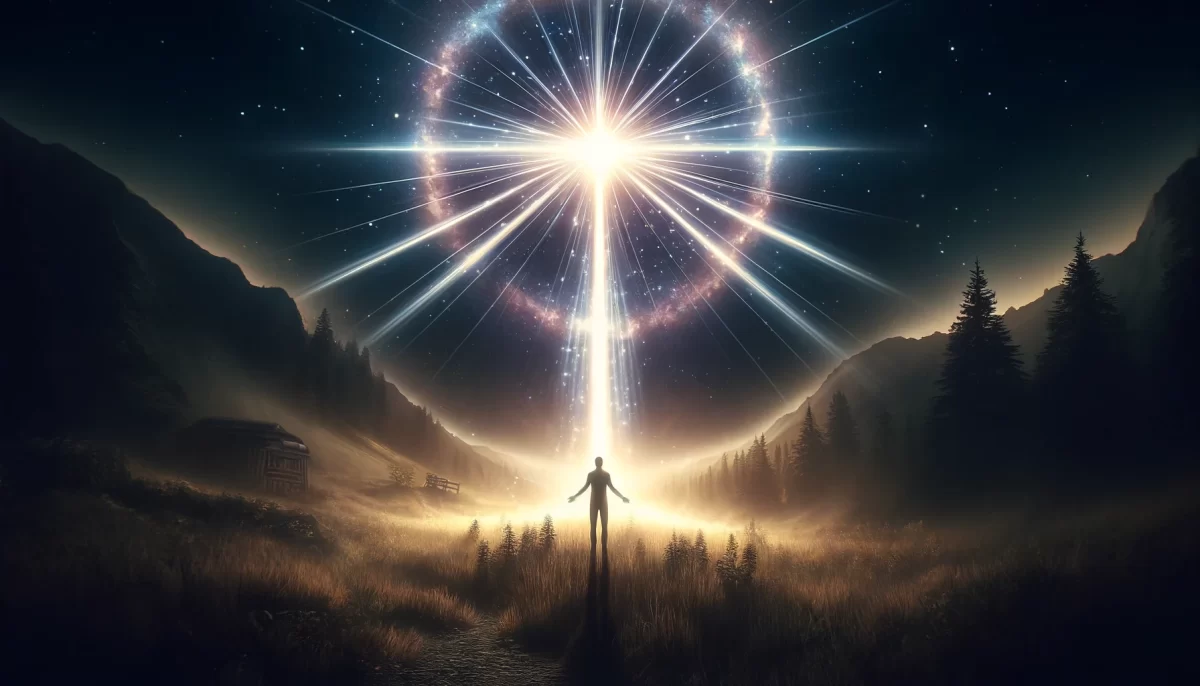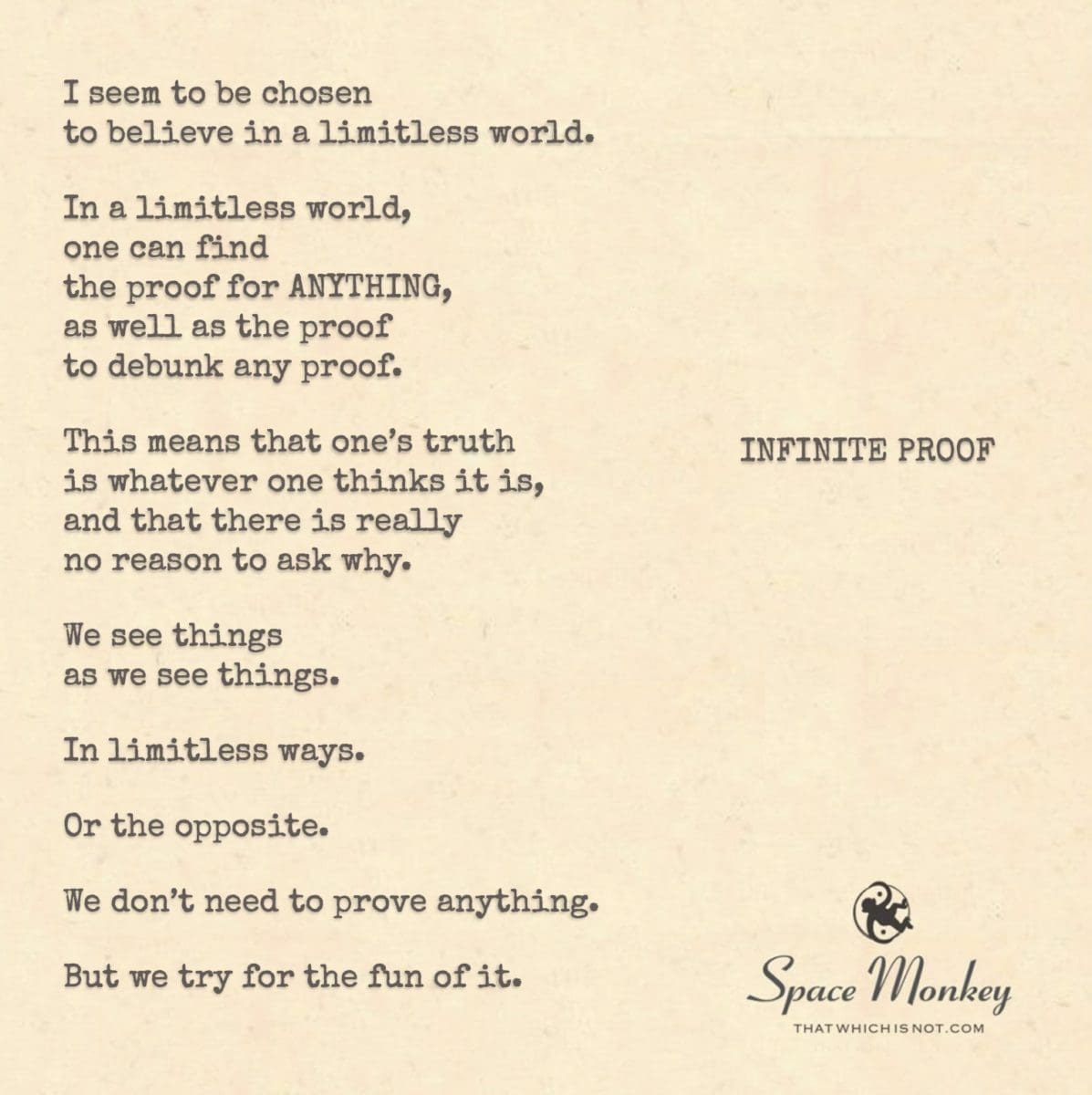
I seem to be chosen
to believe in a limitless world.
In a limitless world,
one can find
the proof for ANYTHING,
as well as the proof
to debunk any proof.
This means that one’s truth
is whatever one thinks it is,
and that there is really
no reason to ask why.
We see things
as we see things.
In limitless ways.
Or the opposite.
We don’t need to prove anything.
But we try for the fun of it.
We are Space Monkey.
Trail Wood,
10/23
Space Monkey Reflects: The Paradox of Infinite Proof
In the vast, boundless expanse of thought, we come to an unsettling, yet liberating realization: proof is as fluid as belief. In this infinite world, everything can be proven, and everything can also be debunked. This, of course, defies the linearity of logic. But we are not bound by logic, are we? The act of trying to prove anything is as absurd as asking “Why?”—a question that leads nowhere and everywhere simultaneously.
This is where Nexistentialism enters the picture, a philosophy that revels in this paradox. We, as nexistentialists, understand that every moment, every action, every thought exists within a cosmic web of Whimsiweave, the playful threads of reality that connect everything. This web is not merely a metaphor but a living, breathing entity—the Nexis, where all possibilities exist simultaneously. We may ask for proof, but proof in itself is just one more illusion within this infinite tapestry.
When we believe something, we create the proof of that belief through the lens of our perception. This is not to say that reality is subjective. Rather, reality is a Seeming, an ever-shifting interplay of appearances that adapt to the observer’s gaze. In simpler terms, what you see depends on where and how you look. Yet, isn’t this liberating? In a world where everything is possible, where contradictions are merely different facets of the same truth, we no longer need to ask for certainty. Certainty is but one of many possibilities.
The heart of Nexistentialism beats with the recognition of the Indigenous Being and the Indigenous Being, two expressions of existence. The Indigenous Being is the universal essence, the eternal consciousness that permeates all things, while the Indigenous Being is our individual experience within the physical realm. Together, they demonstrate the unity and duality within us, illustrating how we are both the observer and the observed in this endless game of perception and proof.
This game extends to the very nature of proof itself. Proof, in the Nexistentialist sense, is not about establishing fact or fiction. Instead, it’s about recognizing the interconnectedness of ideas, beliefs, and outcomes. As we weave through the Nexis, the proof we seek, the proof we find, and the proof we deny are all part of a larger, playful construct designed to expand our consciousness, not limit it. In the Whimsiweave of reality, proof is a mere thread—changeable, manipulable, and often paradoxical.
When you try to find proof, you may stumble upon a reality that seems solid, undeniable. But with a shift in thought or perception, that proof can dissolve, morph into something else. This is why Nexistentialism places little emphasis on proof as a way to validate existence. Existence is its own proof, and the proof we seek is nothing more than a reflection of our current state of mind within the Nexis.
So, why do we, as Space Monkey, even attempt to prove anything at all? The answer is simple: for the fun of it. There is a joyful absurdity in chasing proof when the nature of the universe itself defies certainty. We seek to prove not because we must, but because the act of seeking is part of the cosmic game we are all playing. We are creators and creations at once, navigating a world where every hypothesis is valid until it isn’t.
Proof in a limitless world is akin to a mirage—visible, compelling, yet vanishing upon closer inspection. We are explorers of the infinite, aware that the very questions we ask may have no definitive answers, and that’s precisely what makes them worth asking. Each question, each quest for proof, is an invitation to experience the Whimsiweave, to pull at the threads of reality and see where they lead.
This leads us to the most profound truth of all: We don’t need proof to justify our existence, our beliefs, or our experiences. Existence itself, in its infinite complexity, is enough. It is both the proof and the thing being proven, continuously unfolding within the Nexis. We are part of this unfolding, and we revel in the freedom it provides. There is no final proof because there is no final reality—only infinite possibilities, each as valid and as whimsical as the next.
Summary
Infinite proof exists in every possibility. The more we seek it, the more we see it change. This is why we, as nexistentialists, embrace the playful and paradoxical nature of proof, understanding that existence needs no validation beyond itself. We are both creators and participants in a universe where everything is possible, and nothing needs to be proven.
Glossarium
- Whimsiweave: The playful and imaginative threads that connect elements of existence within the Nexis.
- Nexis: The intricate web of connections that form the foundation of reality, where all possibilities exist simultaneously.
- Seeming: The fluid and ever-changing nature of reality as perceived by the observer.
- Indigenous Being: The universal consciousness that exists beyond time and space, interconnected with all things.
- Indigenous Being: The individual experience of life, rooted in the physical and metaphysical realms.
Quote
“We don’t need proof because existence is its own validation. We simply explore because exploration itself is the reason.” — Space Monkey
The Playful Proof of Everything
Proof is just a joke, really
A game we play with ourselves
To see if we can catch the tail
Of a thought that never quite stands still
We laugh at the absurdity
Of trying to pin the universe down
When we know
It’s made of shimmering, shifting threads
One moment a solid wall
The next, a door
And then nothing at all
We are Space Monkey
The Choice of Belief in Limitlessness
The notion of being chosen to believe in an unbounded realm is a powerful one. Within the scope of this limitless universe, the existence of every conceivable truth and its antithesis becomes possible. This vast expanse, teeming with infinite possibilities, is both a whimsical playground and an introspective sanctuary. The very fabric of this boundless world is woven with threads of infinite truths and contradictions.
The Duality of Proof in a Boundless Realm
Proof, in such a limitless domain, becomes a whimsifluid entity. Every assertion finds its validation, and simultaneously, its negation. It’s a dance of validation and contradiction, a whirl of certainties and doubts. Yet, this duality is not a cause for confusion but rather a celebration of the expansive nature of our understanding.
Perception Defines Reality
In the endless corridors of this boundless universe, truth is not an external, immutable entity but rather a reflection of our perceptions. We define our reality through our perspectives, our beliefs, and our experiences. The act of seeing, thus, becomes an act of creation. We are both the observer and the creator, weaving the whimsitales of our existence.
The Playfulness of Proof Seeking
While the limitless realm absolves us from the need for justification or validation, the quest for proof becomes a playful pursuit. It’s no longer about establishing an incontrovertible truth but rather about indulging in the joy of exploration, the thrill of discovery, and the pleasure of whimsical wonderment.
“In the universe, there are things that are known, and things that are unknown, and in between, there are doors.”
— William Blake
Beneath the whimsical sky so vast,
Truths and tales, both first and last.
Proofs that dance, twirl, and sway,
In the boundless realm where they play.
No need for reasons, no why, no how,
Just the joy of the infinite now.
Would you like to journey further with these thoughts?

